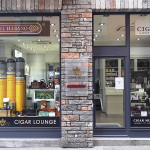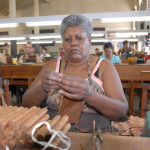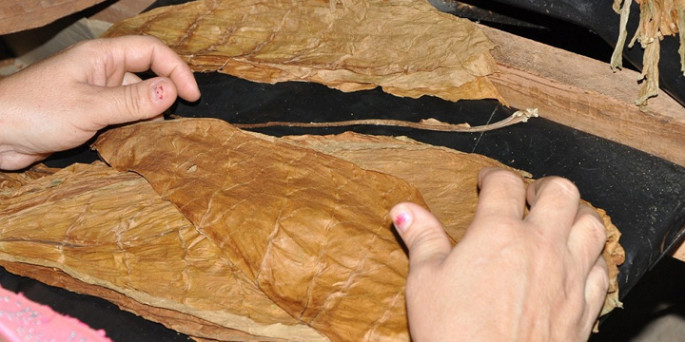
Love those cigars!
The man crosses his legs as he sits comfortably in his terrace, removes the seals from the wooden box, opens it, and caresses — with the veneration of someone who touches a religious relic — a cigar made by hand in Cuba for which he paid a sum that, though reasonable to him, will seem outrageous to his wife.
Because a woman (and may the ultra-feminists forgive me), either in Madrid, Amsterdam, Montreal or Buenos Aires, is not anatomically designed to breathe in the smoke of a cigar the way men do, with the bronchial tubes open and the eyes closed.
That was stated by the film industry, which popularized the stereotype of the femme fatale, unashamedly puffing on any number of cigarettes, never of the best quality. It was stated also by the market, which acknowledges that little more than 5 percent of cigar consumers are women.
But the question of gender is irrelevant. In the end, the man lights the prize, having no idea of the complicated journey the tobacco made from the plantation — that green ocean situated in, say, Pinar del Río in Cuba’s western tip — to the franchises that the Casa del Habano has been exporting to Germany, Switzerland, Paraguay, Lebanon, Qatar, Barbados, to name but a few.
To ask a foreign smoker to think about the Cuban farmer who right now is fertilizing the seeds, to ask him to take pity on the farmer who looks skyward in fear, worried by the devastating effects of a hurricane or a drought, is almost impossible.
What the smoker does is just buy the cigar, completely alienated from a productive process that lasts months, years even in the case of purposely aged cigars.
He would have to be a soothsayer to know that the cigar he twirls between his fingers is not entirely from Havana. The leaf was not cultivated in Cuba’s capital and probably was not rolled in a Havana factory but in the more than 50 factories that, throughout the island, manufacture cigars for export.
In Sancti Spiritus alone, in the center of the island, are eight factories that produce 17 brands of cigars, among them Romeo y Julieta, Montecristo, Quintero, José L. Piedra and Cohíba.
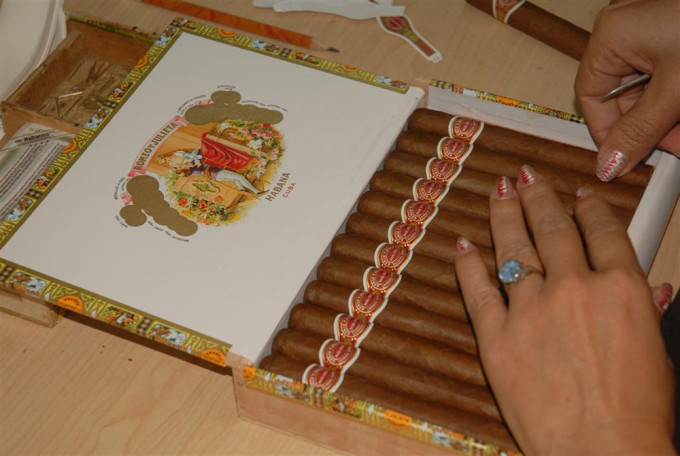
With more than two decades engaged in the manufacture of cigars for export, the “torcedores” [rollers] from Spiritus have managed to reduce the rates of rejection, which they display as indicators of quality — 2.7 percent, down from 4 percent, which, according to experts, is the national average.
In statements to the provincial press, Juan Carlos Pérez, director of the rolled-tobacco enterprise in Sancti Spiritus, has pointed to the quality raw material and the improved technology introduced in the shops as the keys to the high rate of production achieved by the rollers, “despalilladores” [men who remove the stems from the dried tobacco leaves] and other workers.
To that, we should add what the workers call “the chicken in the chicken-with-rice”: the application of the system of payment for results, which, from some months now, has raised wages up to 1,500 pesos and consequently raised the morale of cigar makers in the region.
That’s the region that houses the factory that furnishes containers to the eastern end of the island, much of the central zone and to Havana, a task it has done with a century-old technology. Though using obsolescent means, they have managed comfortably till today and, according to the workers, they can manufacture the more than 594,000 boxes that are needed for export this year.
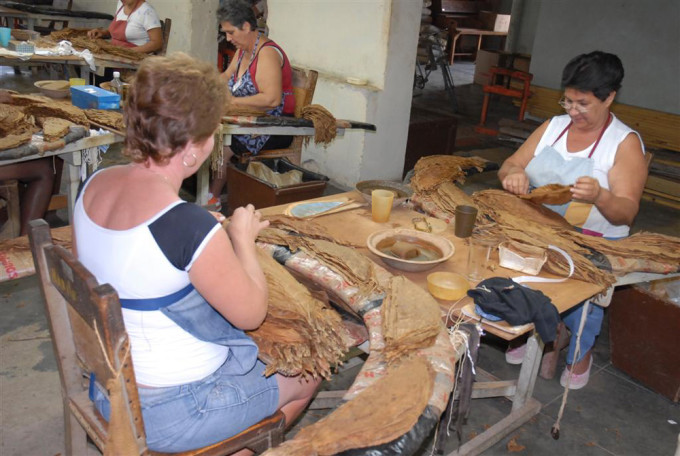
Cigar production is the fourth economic sector that contributes to Cuba’s gross domestic product. The tobacco tradition goes back several centuries, when successive waves of immigrants from the Canary Islands revitalized the plantations in Cabaiguán and Zaza del Medio and placed the Vueltarriba tobacco on the map.
Judging from the vehemence with which its workers defend it, Vueltarriba tobacco is second to none. Its producers boast of having built an emporium in the most fertile land in the region and having stabilized the annual revenue, which ranges between 20,000 and 500,000 pesos per season, depending on how many tons of leaves they can obtain from each farm.
“What’s important is not the area where the tobacco is planted, either in Sancti Spiritus or Pinar del Río. What’s important is the man who tends the tobacco, his know-how in the treatment of the bushes, his willingness to tread the furrows seven days a week,” says Félix Álvarez, a farmer famous in Cabaiguán and all Cuba for the high yield of his fields and the 1 million pesos he reportedly pocketed after the latest harvest.
According to official statistics, tobacco production generates more than 150,000 jobs throughout Cuba, from the day the seeds are planted to the day the cigars leave the country under the seal of Habanos S.A., a 50-50 joint venture between state-owned Cubatabaco and Altadis, a Spanish entity that belongs to the English group Imperial Tobacco Group PLC.
Imperial Tobacco, a company present in five continents and more than 150 countries, made 439 million dollars in 2014, according to figures released during the inauguration of the 2015 Cigar Festival last February.
Yet, that figure was below the 2013 earnings, owing to delays in harvest caused by foul weather and the negative impact of higher taxes in Europe.
Cuban producers cannot escape the whims of the international market but they can tighten their belts (and they do) to fulfill the development plan devised by the government, which includes the expansion of plantations — the outlook for 2020 is more than 20,000 hectares [50,000 acres] — and the updating of all the links in the long productive chain.
None of this crosses the mind of the inveterate smoker who — in Europe, Latin America or Asia — enjoys cigars “Made in Cuba” despite the criticism of his wife, who cannot understand (a woman, after all) why a man has to pay so much money to poison oneself with that fragrant smoke.
Photos by Vicente Brito.
Progreso Weekly authorizes the total or partial reproduction of the articles by our journalists so long as source and author are identified.



